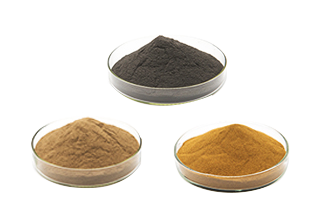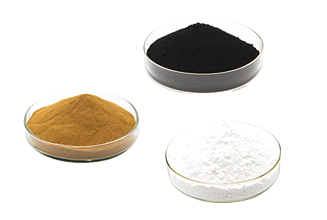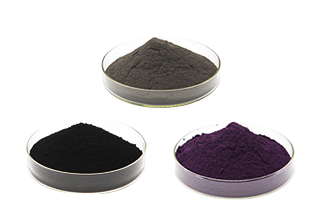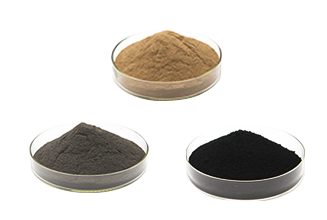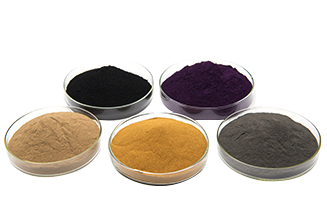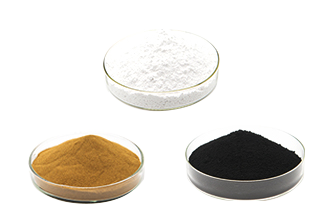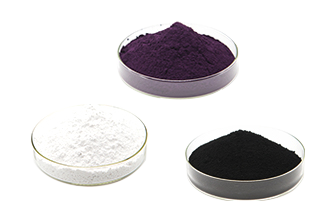Research Progress of Plasma Spraying Technology for Preparation of Ceramic Coatings
Plasma spraying uses a compressed arc as the heat source. The continuous working gas (fluorine, nitrogen, hydrogen, etc.) passes through the compressed arc and ionizes to become a high-temperature and high-speed plasma flame. The sprayed material is heated to a molten or semi-melted state by the plasma flame. And along with the plasma flame jet at high speed and deposited on the surface of the roughened clean substrate, after quenching and solidifying to form a sprayed layer. Compressed arc is produced by ordinary arc through mechanical compression, thermal compression and self-magnetic compression.
Characteristics of plasma spraying technology
Compared with other thermal spraying, plasma spraying has the following characteristics:
(1) The sprayable materials are extremely wide. Because the flame temperature of plasma spraying is very high, its center temperature can reach 32000K, which can melt almost all materials with high melting point and high hardness, so it is very suitable for the spraying of ceramics and high melting point substances, which cannot be achieved by other spraying methods. ;
(2) The coating is dense and the bonding strength is high. Plasma spraying can make the powder obtain greater kinetic energy, and the powder temperature
The degree is high, so the coating obtained by spraying has high density and high bonding strength;
(3) The thickness of the coating can be controlled as required, and the error can be controlled to 0.025mm;
(4) The thermal effect on the workpiece is small. Plasma spraying has a small heat input to the workpiece, the metallographic structure of the substrate will not change after spraying, and the workpiece will hardly be deformed. While improving the abrasion resistance, oxidation resistance and heat resistance, it does not affect the original mechanical properties of the machine body, and can spray precision workpieces at the same time;
(5) High spraying efficiency. When using high-energy plasma equipment, the powder deposition efficiency can reach 8kg/h;
(6) The spraying material and the sprayed material can be freely selected and combined.
Classification of plasma sprayed ceramic coatings
1. Oxide ceramic coating
Oxide ceramics have a higher melting point, outstanding mechanical properties and high-temperature chemical stability, and can be used to improve the strength, hardness, wear resistance or biological properties of the matrix material. The oxide ceramics commonly used as coating reinforcement are: Al2O3, ZrO2, Cr2O3, SiO2, TiO2, MgO, etc.
2. Carbide ceramic coating
Carbide ceramics have a very high melting point, generally above 3000oC, so they have excellent oxidation resistance and high temperature performance, and are mostly used as superhard materials such as cutting tools. Carbide ceramics commonly used as coating reinforcement are: TiC, WC, ZrC, SiC, etc.
3. Nitride ceramic coating
Nitride ceramics have outstanding oxidation resistance and good dielectric properties, but the sintering process is more complicated than other ceramics. Nitride ceramics commonly used for coating enhancement include: Si3N4, TiN, BN, AlN, etc.
4. Other ceramic coatings
In addition to the types of ceramics described above, boride ceramics, silicide ceramics and some multiphase ceramics are often used as the reinforcing phase of ceramic coatings.
Application
1. Wear-resistant coating
Wear-resistant coating is a typical application of plasma spray coating. It has the characteristics of high hardness, high melting point, thermal stability and good chemical stability. It can effectively protect the base material and significantly improve the wear resistance, high temperature resistance and resistance of the material. High temperature oxidation, thermal shock resistance and corrosion resistance. Common wear-resistant coating materials include oxide ceramics such as Al2O3, ZrO2, Cr2O3, etc., as well as cermets, carbide ceramics, silicide ceramics, nitride ceramics and boride ceramics, such as WC, TiC, Cr2C3, TiB2 and TiCN, etc.
2. Corrosion resistant coating
In recent years, the more widely used corrosion-resistant coatings include metal oxide ceramics such as Al2O3, TiO2, ZrO2, and Cr2O3. Plasma spraying technology is used to spray a ceramic coating on the surface of low carbon steel, which can obtain better wear resistance and corrosion resistance, and maintain good internal toughness, thereby ensuring the reliability and operation of hydraulic machinery. stability.
3. Thermal barrier coating
The thermal barrier coating is composed of a ceramic oxide layer with excellent heat insulation performance and a metal bonding layer that has a bonding effect, and it is sprayed on the substrate of high temperature resistant metal and super alloy. The function of the ceramic oxide layer is to obtain a lower temperature along the coating to the substrate, so that the substrate is subjected to a lower temperature, forming a temperature gradient, thereby improving the high temperature oxidation resistance and wear resistance of the substrate. The bonding layer serves to connect the ceramic coating and the substrate. Because the thermal barrier coating reduces the temperature transferred to the base material, it has a certain thermal insulation effect, so that the parts can be safely and reliably operated at high temperatures, and the thermal efficiency of the workpiece is improved. Thermal barrier coating has the characteristics of high hardness, high chemical stability, and can significantly reduce the temperature of the substrate, so it is widely used in aero engines, steam turbines, and turbine blades.
4. Superconducting coating
Supersonic plasma sprayed superconducting ceramic coatings have made certain research progress. The temperature of the plasma arc is very high. It can spray composite oxide ceramics without protective gas. It is also suitable for spraying superconducting parts with complex shapes. It has high deposition efficiency and is easy for thick film coatings and larger area coatings. preparation. In many aspects, such as microwave components, magnetic shielding devices, transmission devices and quantum electronic devices have a wide range of applications. The superconducting ceramic coating materials commonly used in plasma spraying mainly include yttrium barium copper oxide (YBaCuO) and bismuth strontium calcium copper oxide (BiSrCaCuO).
5. Piezoelectric ceramic coating
Piezoelectric ceramics is a very important functional ceramic material, mainly used in national defense, aerospace and communications. Lead titanate and barium titanate are commonly used piezoelectric ceramic materials. Lead titanate is characterized by high Curie temperature, high electromechanical coupling coefficient and low dielectric constant; barium titanate (BaTiO3) has high dielectric properties and excellent Ferroelectric, dielectric, pyroelectric and good piezoelectric properties, as a reusable piezoelectric ceramic material, are widely used in electronic components such as insulators, piezoelectric sensors, and capacitors.
6. Bioactive coating
Bioactive coatings have been widely used clinically, and plasma spraying technology is one of the main methods for preparing bioactive ceramic materials. The ceramic powder material with biological activity is sprayed on the surface of the metal material according to a certain composition ratio, so that it has good biological activity, and combines the advantages of the metal material and the ceramic material, and is implanted into the human body as an artificial bone or an artificial joint. Hydroxyapatite (HA) ceramic is an important inorganic component of human body, animal bones and teeth. It has excellent biocompatibility, bone tissue induction, and corrosion resistance. After being implanted into the human body, hydroxyapatite and Human bones form chemical bonds, which are widely used in clinical practice. The hydroxyapatite coating material prepared by thermal spraying technology has both the mechanical strength of metal materials and the biological properties of bioceramics. Significant progress has been made in its research and application.
Characteristics of plasma spraying technology
Compared with other thermal spraying, plasma spraying has the following characteristics:
(1) The sprayable materials are extremely wide. Because the flame temperature of plasma spraying is very high, its center temperature can reach 32000K, which can melt almost all materials with high melting point and high hardness, so it is very suitable for the spraying of ceramics and high melting point substances, which cannot be achieved by other spraying methods. ;
(2) The coating is dense and the bonding strength is high. Plasma spraying can make the powder obtain greater kinetic energy, and the powder temperature
The degree is high, so the coating obtained by spraying has high density and high bonding strength;
(3) The thickness of the coating can be controlled as required, and the error can be controlled to 0.025mm;
(4) The thermal effect on the workpiece is small. Plasma spraying has a small heat input to the workpiece, the metallographic structure of the substrate will not change after spraying, and the workpiece will hardly be deformed. While improving the abrasion resistance, oxidation resistance and heat resistance, it does not affect the original mechanical properties of the machine body, and can spray precision workpieces at the same time;
(5) High spraying efficiency. When using high-energy plasma equipment, the powder deposition efficiency can reach 8kg/h;
(6) The spraying material and the sprayed material can be freely selected and combined.
Classification of plasma sprayed ceramic coatings
1. Oxide ceramic coating
Oxide ceramics have a higher melting point, outstanding mechanical properties and high-temperature chemical stability, and can be used to improve the strength, hardness, wear resistance or biological properties of the matrix material. The oxide ceramics commonly used as coating reinforcement are: Al2O3, ZrO2, Cr2O3, SiO2, TiO2, MgO, etc.
2. Carbide ceramic coating
Carbide ceramics have a very high melting point, generally above 3000oC, so they have excellent oxidation resistance and high temperature performance, and are mostly used as superhard materials such as cutting tools. Carbide ceramics commonly used as coating reinforcement are: TiC, WC, ZrC, SiC, etc.
3. Nitride ceramic coating
Nitride ceramics have outstanding oxidation resistance and good dielectric properties, but the sintering process is more complicated than other ceramics. Nitride ceramics commonly used for coating enhancement include: Si3N4, TiN, BN, AlN, etc.
4. Other ceramic coatings
In addition to the types of ceramics described above, boride ceramics, silicide ceramics and some multiphase ceramics are often used as the reinforcing phase of ceramic coatings.
Application
1. Wear-resistant coating
Wear-resistant coating is a typical application of plasma spray coating. It has the characteristics of high hardness, high melting point, thermal stability and good chemical stability. It can effectively protect the base material and significantly improve the wear resistance, high temperature resistance and resistance of the material. High temperature oxidation, thermal shock resistance and corrosion resistance. Common wear-resistant coating materials include oxide ceramics such as Al2O3, ZrO2, Cr2O3, etc., as well as cermets, carbide ceramics, silicide ceramics, nitride ceramics and boride ceramics, such as WC, TiC, Cr2C3, TiB2 and TiCN, etc.
2. Corrosion resistant coating
In recent years, the more widely used corrosion-resistant coatings include metal oxide ceramics such as Al2O3, TiO2, ZrO2, and Cr2O3. Plasma spraying technology is used to spray a ceramic coating on the surface of low carbon steel, which can obtain better wear resistance and corrosion resistance, and maintain good internal toughness, thereby ensuring the reliability and operation of hydraulic machinery. stability.
3. Thermal barrier coating
The thermal barrier coating is composed of a ceramic oxide layer with excellent heat insulation performance and a metal bonding layer that has a bonding effect, and it is sprayed on the substrate of high temperature resistant metal and super alloy. The function of the ceramic oxide layer is to obtain a lower temperature along the coating to the substrate, so that the substrate is subjected to a lower temperature, forming a temperature gradient, thereby improving the high temperature oxidation resistance and wear resistance of the substrate. The bonding layer serves to connect the ceramic coating and the substrate. Because the thermal barrier coating reduces the temperature transferred to the base material, it has a certain thermal insulation effect, so that the parts can be safely and reliably operated at high temperatures, and the thermal efficiency of the workpiece is improved. Thermal barrier coating has the characteristics of high hardness, high chemical stability, and can significantly reduce the temperature of the substrate, so it is widely used in aero engines, steam turbines, and turbine blades.
4. Superconducting coating
Supersonic plasma sprayed superconducting ceramic coatings have made certain research progress. The temperature of the plasma arc is very high. It can spray composite oxide ceramics without protective gas. It is also suitable for spraying superconducting parts with complex shapes. It has high deposition efficiency and is easy for thick film coatings and larger area coatings. preparation. In many aspects, such as microwave components, magnetic shielding devices, transmission devices and quantum electronic devices have a wide range of applications. The superconducting ceramic coating materials commonly used in plasma spraying mainly include yttrium barium copper oxide (YBaCuO) and bismuth strontium calcium copper oxide (BiSrCaCuO).
5. Piezoelectric ceramic coating
Piezoelectric ceramics is a very important functional ceramic material, mainly used in national defense, aerospace and communications. Lead titanate and barium titanate are commonly used piezoelectric ceramic materials. Lead titanate is characterized by high Curie temperature, high electromechanical coupling coefficient and low dielectric constant; barium titanate (BaTiO3) has high dielectric properties and excellent Ferroelectric, dielectric, pyroelectric and good piezoelectric properties, as a reusable piezoelectric ceramic material, are widely used in electronic components such as insulators, piezoelectric sensors, and capacitors.
6. Bioactive coating
Bioactive coatings have been widely used clinically, and plasma spraying technology is one of the main methods for preparing bioactive ceramic materials. The ceramic powder material with biological activity is sprayed on the surface of the metal material according to a certain composition ratio, so that it has good biological activity, and combines the advantages of the metal material and the ceramic material, and is implanted into the human body as an artificial bone or an artificial joint. Hydroxyapatite (HA) ceramic is an important inorganic component of human body, animal bones and teeth. It has excellent biocompatibility, bone tissue induction, and corrosion resistance. After being implanted into the human body, hydroxyapatite and Human bones form chemical bonds, which are widely used in clinical practice. The hydroxyapatite coating material prepared by thermal spraying technology has both the mechanical strength of metal materials and the biological properties of bioceramics. Significant progress has been made in its research and application.
related news
-
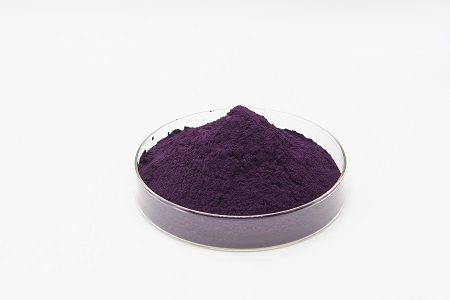 Mar 09, 2022Lanthanum hexaboride properties and application
Mar 09, 2022Lanthanum hexaboride properties and application -
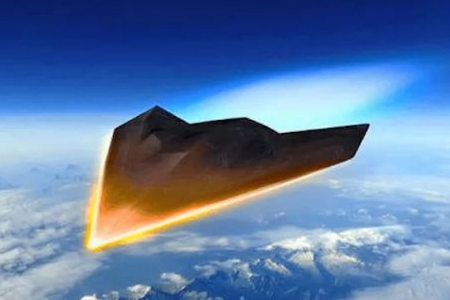 Feb 28, 2022Research on ultra-high temperature ceramic materials(1)
Feb 28, 2022Research on ultra-high temperature ceramic materials(1) -
.png) May 23, 2022Carbide ultra-high temperature ceramics have high melting point, high strength, high hardness and good chemical stability, and are widely used ultra-high temperature ceramic materials
May 23, 2022Carbide ultra-high temperature ceramics have high melting point, high strength, high hardness and good chemical stability, and are widely used ultra-high temperature ceramic materials -
.png) Dec 08, 2021Ultra-high temperature materials
Dec 08, 2021Ultra-high temperature materials

